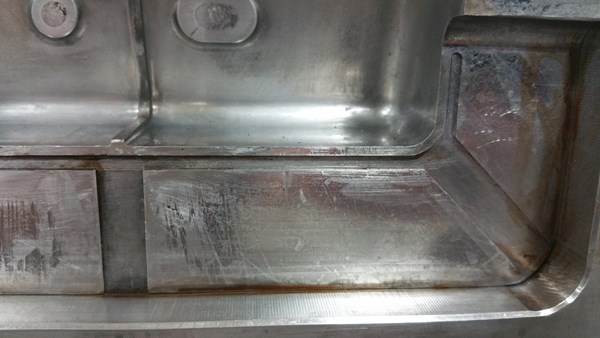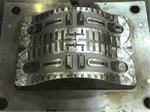The Designer's Edge: Parting Line Vent Design
Randy believes that the way you design and cut relief channels can drastically increase your volume of venting and the amount of parting line bearing surface.

A preferred venting design that runs along the cavity edge.
Today I’d like to discuss how parting line vent design impacts venting. For example, you can drastically increase your volume of venting and the amount of parting line bearing surface with how you design and cut your relief channels. The width of the track does not impact the amount of venting.
I prefer to run smaller tracks along the cavity edges and then T-off with the relief to atmosphere—specifically at knit lines, corners, dead ends and end-off-fill areas. The industry seems split on its view of perimeter venting. Personally, although I understand perimeter venting is not a necessity, I do not object to its use. However, it yields many advantages, if the relief channels are designed correctly.
With vent land, my starting point is typically 0.080 land along the edge of the cavity on to three inches in length—unless using perimeter venting. When a venting issue still causes a problem, I take my land to 0.030 to 0.040, which helps avoid plugging up. The length of the land can have a big impact on build-up and how long the vents remain open and clean.
It is key to make sure your vent tracks wrap around corners and not just the standard straight tracks on each side. Also vent tracks should be added inside shut-off details that form holes or details on the part that create knit lines. In most cases, you will have to add a hole to atmosphere through the shut-off to maximize the venting. Many will try to process around these knit lines. Although this helps, venting can also have an impact here and allow for a larger process window.
It is also important to machine or surface grind your vents to depth whenever possible. This provides a better finish and accurate depth versus grinding, stoning or hand filing. The finish of the vent itself can assist with longer cleanliness and reduced build-up. Some will even polish the vents.
At times vents need to be manually opened due to the contoured parting line. You can accurately open vents to specific depths with a good process and a lot of experience. I use a specific brush with the bristles trimmed to length as well as a specific spotting blue that allows me to know the vent depth.
On June 26, I will examine how parting line bearing surface impacts venting.
For more on this and other Designer's Edge topics, catch up with Randy the Amerimold Expo on June 17 for his talk on "Overcoming Repair and Part Quality Challenges with Design." Click here to register to attend.
















_970x250 4.png;maxWidth=970;quality=90)